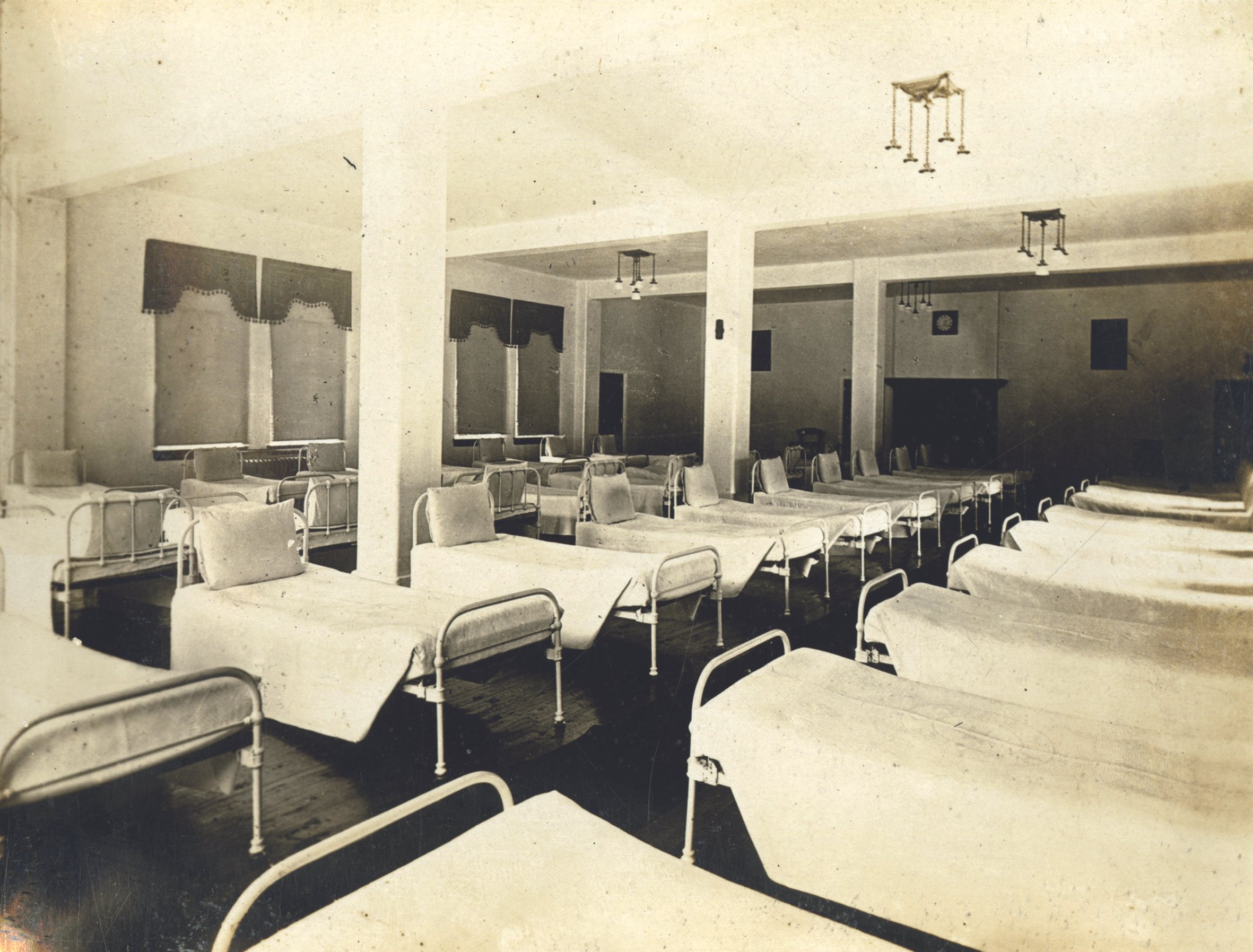
The 1964/65 BC Mental Health Acts shifted the focus of mental health care to local facilities. Deinstitutionalization had begun, with upwards of 30 smaller facilities opening by 1970. Over the coming years, the availability of drugs and the rising costs of maintenance led to the closing of more and more beds at Riverview Hospital. By 1981, there were only 1,100 beds left out of 4,100. Further downsizing programs would take place, with the last patients leaving in 2012.
Dormitory, Coquitlam Archives C5.010-16
Drugs first arrived in large amounts during the 1980s and Expo 86. Dealers began to market high purity drugs to the increased tourist traffic. Police attempted to crack down on the drug use and prostitution cropping up in the neighbourhood, but the issues persisted. Around this time, de-institutionalization was ongoing in BC; many patients forced out of the Riverview Hospital made their way to the Downtown Eastside, in need of the historically affordable housing there.
The Downtown Eastside, often shortened to DTES, or referred to as Hastings, or East Hastings, is a historic neighbourhood in the city of Vancouver. The Downtown Eastside is a diverse neighbourhood home to several thousands of people. Currently, the neighbourhood is the site of an ongoing addiction and mental health crisis.
Throughout the late 80s and 90s, drug dealers preyed upon the vulnerable mentally ill people who had been forced out of mental institutions. This only furthered the issues that these people faced. Today, the Downtown Eastside continues to be a hotspot for mental issues and drug addiction. People are continually drawn for affordable housing and the concentration of mental health and addiction services.
